Can a Putter Shaft Unlock Your Potential?
For the last couple years, putter shafts have been one of the hottest topics in golf equipment. They’ve even been the focus of two previous Golf Myths Unplugged – one exploring whether or not they make a difference [read it HERE] and another diving into the benefits of SST PURE for a putter shaft [HERE].
In this edition of Golf Myths Unplugged, we’re getting specific with putter shaft weight. We know that shaft weight makes a huge difference in the long game, but does it affect putting, too? And if so, how? Let’s find out together.
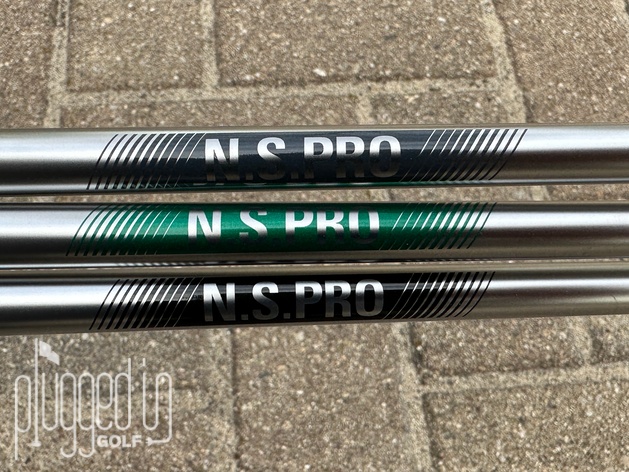
The Myths
Myth #1 – Heavier putter shafts will perform better on short putts
Myth #2 – Lighter putter shafts will perform better on long putts
Myth #3 – Heavier putter shafts will improve consistency
Myth #4 – Putter shaft weight can alter your swing
How We Tested
This Golf Myths Unplugged test was done in two parts. First, we tested short putts (eight feet). Each of five players hit seven putts with each putter while being measured by SAM Puttlab. This testing was done at Club Champion. Next, we had seven players test each of our putters outdoors on a thirty foot putt. The putt was straight and nearly flat so that experience did not play much of a role.
For both parts of the testing, we used three putters. Each putter had an identical SWAG Handsome One head [review HERE] and was built to the exact same specs with the exact same grip. The only difference was that the putters had a different weight Nippon NS Pro putter shaft [review HERE]. The three shafts weigh 120, 140, and 160 grams, respectively. Players were not told which shaft was heavier or lighter, and every tester used the putters in a different order.
The Results
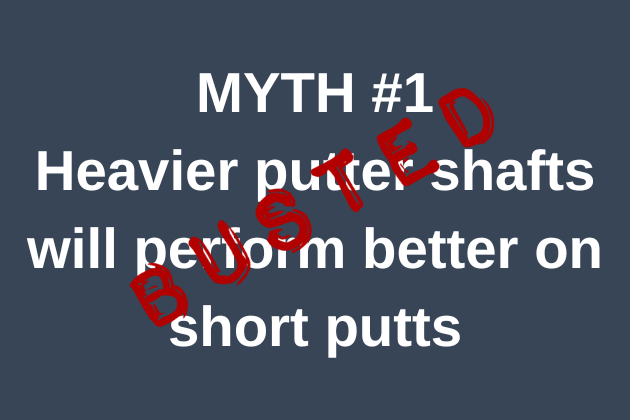
Some people preach (and sell) the notion that more weight in a putter will steady the hands, smooth the stroke, and lead to more made putts. If this is true, we should see that most clearly at short range on a flat, straight putt. However, that is not what we found.
Whether looking at the SAM Puttlab data or the simple metric of putts made, there was no correlation between heavier weight and superior putting. Depending on the tester, any of the shafts could be the top performer or the worst of the group.
Our group didn’t see much variance when looking at made putts – these were lower handicappers who made at least five putts out of seven on every series. Diving deeper into the SAM Puttlab data, we could see more variation from one shaft to the next, but, again, no single shaft was consistently better across our group.
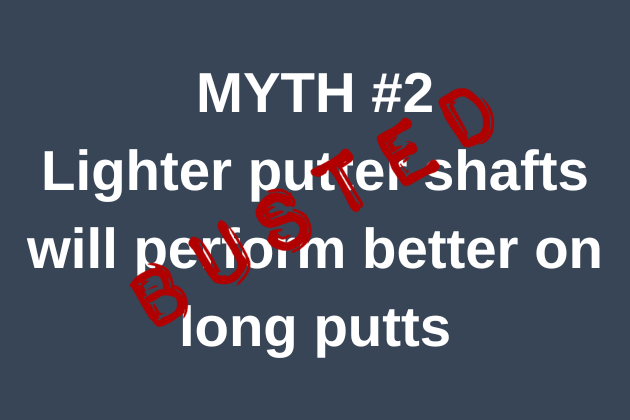
Just as no single putter shaft dominated our short putting, there was not a clear winner in the long putting. Looking at the total feet remaining as well as the median leave, some of our seven testers were best with each of the three shafts, and no shaft demonstrated overall superior results.
On the longer putt, the testers expressed stronger feelings about the weights of the shaft. Players who preferred lighter weight noted that the heavier shafts required too much effort; they didn’t feel that they could be precise. They also noted that the heavier shaft felt like it gave the ball more speed, that the ball went further given the same stroke.
There were also players who preferred the heavier shaft. They felt that it created a smoother stroke and that the lighter shaft was too easy to “lose” during the swing. Also, the heavier shafted required less “hit” or effort to get the ball to the hole.
You can see that both groups are saying nearly the same things, but there’s a difference in which side of the coin they prefer. Of course, we also had players who liked the middle weight option as it had some of the appeal of each extreme.
It’s worth noting again that every player used the putter shafts in a different order, so no shaft got the benefit of experience. What we did find interesting is that experience did not seem to help. The putt we used was almost perfectly flat and straight. Even with that, we expected some improvement as players got a feel for the distance. That did not prove to be the case. Players were as likely to putt best on their first series as their third.
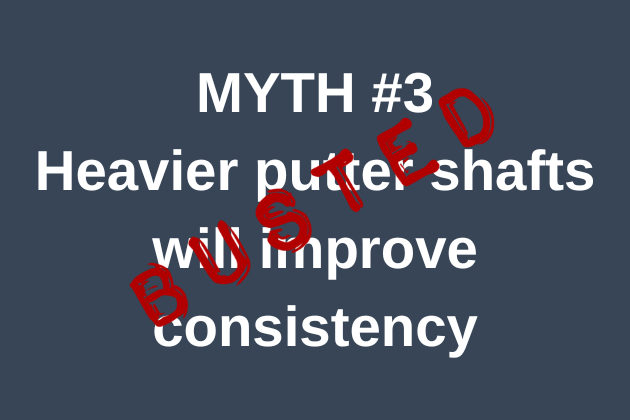
To evaluate this myth, we went straight to our SAM Puttlab data. SAM Puttlab produces a single number for Overall Consistency for each player and putter that goes through the testing. Our results – perhaps predictable after you’ve read this far – were mixed.
Two of our short range testers achieved their best Overall Consistency score with the heaviest putter shaft. In both cases, the lightest shaft was also their least consistent. Both players saw gains of over 15% by switching to the heaviest shaft.
On the other hand, two testers posted the exact opposite results. They had their best Overall Consistency with the lightest shaft and their worst score with the heaviest shaft.
Our fifth tester was the Goldilocks of the group. His best Overall Consistency score came with the middle weight shaft. Both the lighter and heavier shaft hurt his consistency by roughly 10%.
As we expected, a heavier putter shaft was not better; a better fit putter shaft was better.
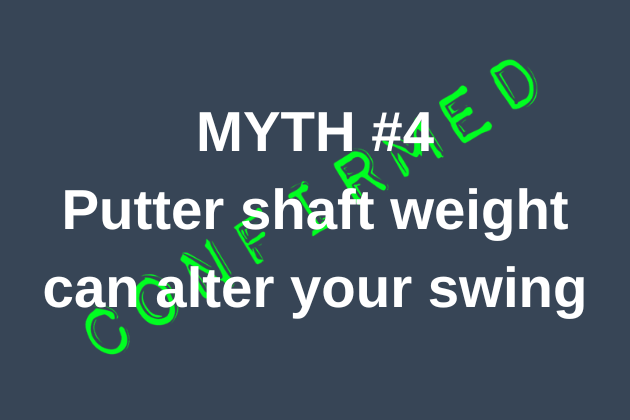
For this final myth, we again turned to the SAM Puttlab data. SAM Puttlab provides information on stroke path, rate of rotation, and several other aspects of the putting motion. In comparing the three reports that each player generated, we were able to see that putter shaft weight definitely can alter a player’s stroke.
For two of our players, we saw substantial changes to their club path and rate of rotation as we changed putter shafts. Both players saw reduced arc in their stroke with the lighter shaft. However, the lighter shaft led one player to keep the club face more square to path, the other was less square to path. Further, one of these players was best with the light shaft (more made putts, better contact, better consistency), and the other got their worst result from the light shaft.
However, the other three players saw minimal stroke changes across the three series of putts. Despite a change of as much as 40 grams in shaft weight, their swing stayed consistent. The shaft changes did affect their quality of impact and their Overall Consistency score, but the stroke looked the same in terms of path and rate of rotation.
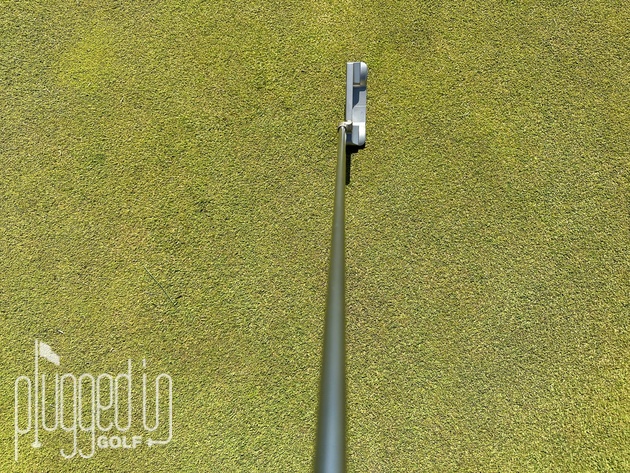
Additional Notes
We made several noteworthy observations during our testing. First, every player was able to correctly identify the heaviest and lightest shaft. They were not asked to do this, but they would spontaneously say things such as, “Oh, this is much heavier/lighter” with perfect accuracy.
Of further interest is the fact that each player noted a preference. Some had stronger feelings than others, but every tester would indicate greater or lesser comfort with the different weights.
Most interesting of all is the fact that each player’s preference aligned to their best performance. In many previous tests, this has not been the case (i.e. a player might prefer Shaft A but perform better with Shaft B). Also, a player’s strength of preference was reflected in the performance gap. If a player felt, for example, that the heavy shaft was far too heavy, their performance really suffered. Players with mild preferences saw smaller gaps between the three shafts.

The Takeaway
The putter was already the most complex club to fit, and now we’ve discovered that there’s another element we need to consider: putter shaft weight. Across all of our testers, we saw that changing the weight of the putter shaft can help or hinder their putting. In some cases, the shaft weight can even change the shape of the putting stroke.
If you’re struggling on the greens and want a relatively easy, affordable way to try something new, experiment with putter shaft weight, and trust your feel. Our test group showed that, at least in this case, golfers instinctively know what works best for them.
He founded Plugged In Golf in 2013 with the goal of helping all golfers play better and enjoy the game more.
Matt lives in the northwest suburbs of Chicago with his wife and two daughters.
- Performance Golf Click Stick Training Aid Review - October 18, 2024
- Callaway Opus Platinum Wedge Review - October 17, 2024
- When to Take a Break from Golf - October 15, 2024





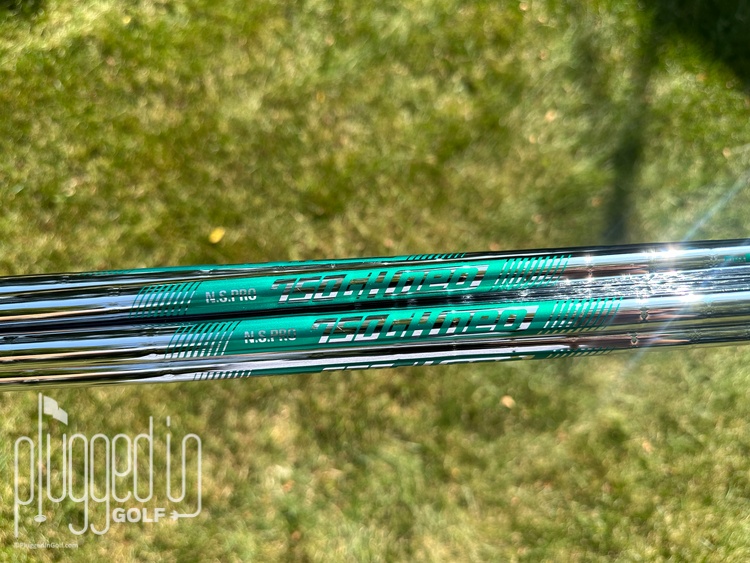










8 Comments
Now try a real heavy putter shaft of 300 grams.
Made a huge difference for me.
I putt a lot….averaging 200 putts per day for last two years. I use multiple different putter heads and change shafts frequently.. I do best with both a light head and a light shaft. The heavy head with light shaft, not so much. And any head with a heavy shaft, not at all. I’ve even loaded the grip end of light shafts with extra weight…..jury still out on that one.
I love reading about tests like these! I found I putted much better with a backweight. I was even able confirm it during 2 separate fittings. Recently I put a new grip on my putter and really started struggling again. I realized the new grip was actually about 25g lighter and once I increased the backweight accordingly it felt right again. Some of these new heavier lower torque shafts are interesting and I may have try one out soon.
This is really an *EXCELLENT* study!!! I hope it gets picked up and re-printed by other golf media so more golfers could benefit by reading this.
Also another proof that club fitting is so exclusive to each individual and there are no “rules” on how to fit a club to a player – find the right thing that helps you perform better on the course!
Cool test, Matt. I used to restart old blade putters (wizard 600, 8802) with DGS shafts after I rolled a friend’s modified this way. I never thought to weigh the pulled ones but I definitely putted better after the swap.
This article is very useful and helpful. Keep them coming. There are far too many golf myths being repeated at courses and clubhouses all over the world.
I love my “Heavy Putter ” by Beccieri !!
I have played a LOT of different putters and NEVER known the shaft weight. More important to me is the overall look, balance, and feel of the putter, as well as having a putter of the correct length.
All that being said, after owning at least 15 or 20 Scottys of varying designs, a few different Ping designs, 2 Spiders, and one EVNroll, I have NEVER had a putter which performs as well as or feels as good as my new Odyssey AI-one Double Wide. Odyssey is truly onto something with the AI insert behind the face in terms of speed and distance control, which, when you boil it all down, is the key to everything outside of 6-8 feet.
It is not just industry hype. Importantly, I feel smarter after putting with AI (lol)